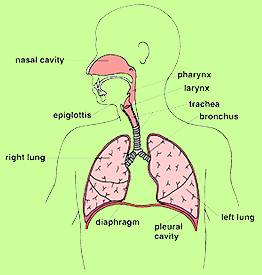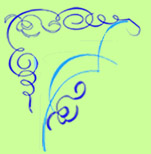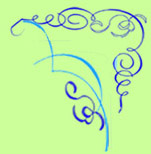Here is a rendering of what the inside of the human head looks like when viewed sideways, showing those stuctures involed in vocal production:
|
 |
Below is a
drawing that represents parts of the respiratory system. Note how high up the dome-shaped diaghragm sits when at rest. When it contracts to fill the lungs with air the dome descends, pushing the body's internal organs, intestines down and out. The intercostal muscles (not shown) support the breath and keep the rib cage extended out sideways during a sustained exhalation as when singing or in projected speech.
|

|
Below is a representation of what the larynx looks like, if you were looking at it from above. They lie horizontally in the throat. The vocal folds or cords are actually a muscle that is closed in the front (behind your Adam's apple), and open in the back. The vocal folds are actually much smaller than most people think. In the typical Soprano they are the size of a dime. When you are quietly inhaling they are open, allowing air to flow into the lungs. The muscles within the larynx open and close the vocal folds and also act to tilt the larynx stretching them to raise or lower pitch. The vocal folds are covered with a mucous layer (not shown) that carries the sound wave which creates vibration. During vocalization the vocal cords open and close very quickly while a stream of air passes through them creating a "wave-like" motion in the mucous covering. This is the source of the sound you make.
Here is a link to videos of the vocal folds when making sounds:
CLICK HERE
|

|
Site Links:
|




